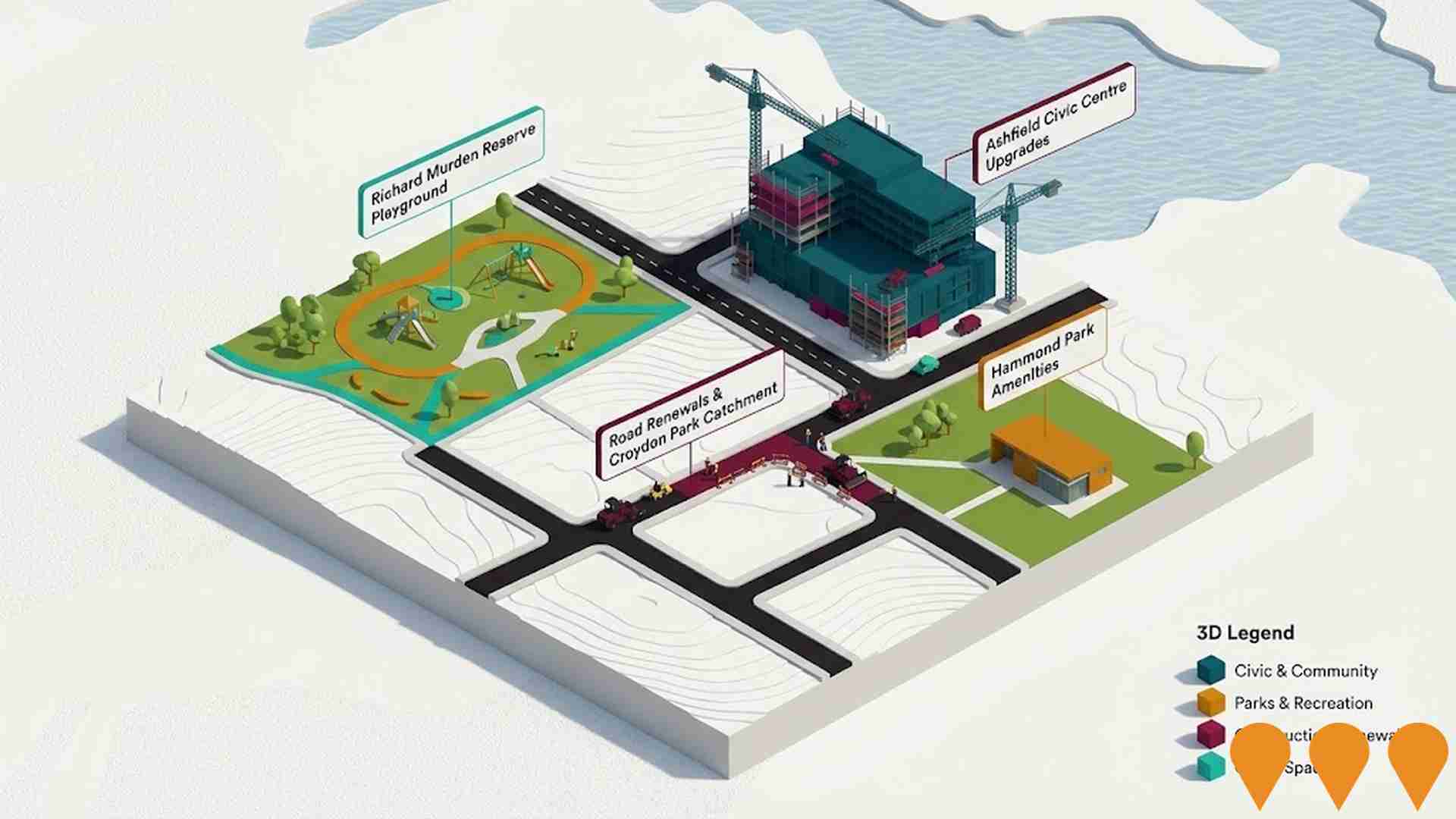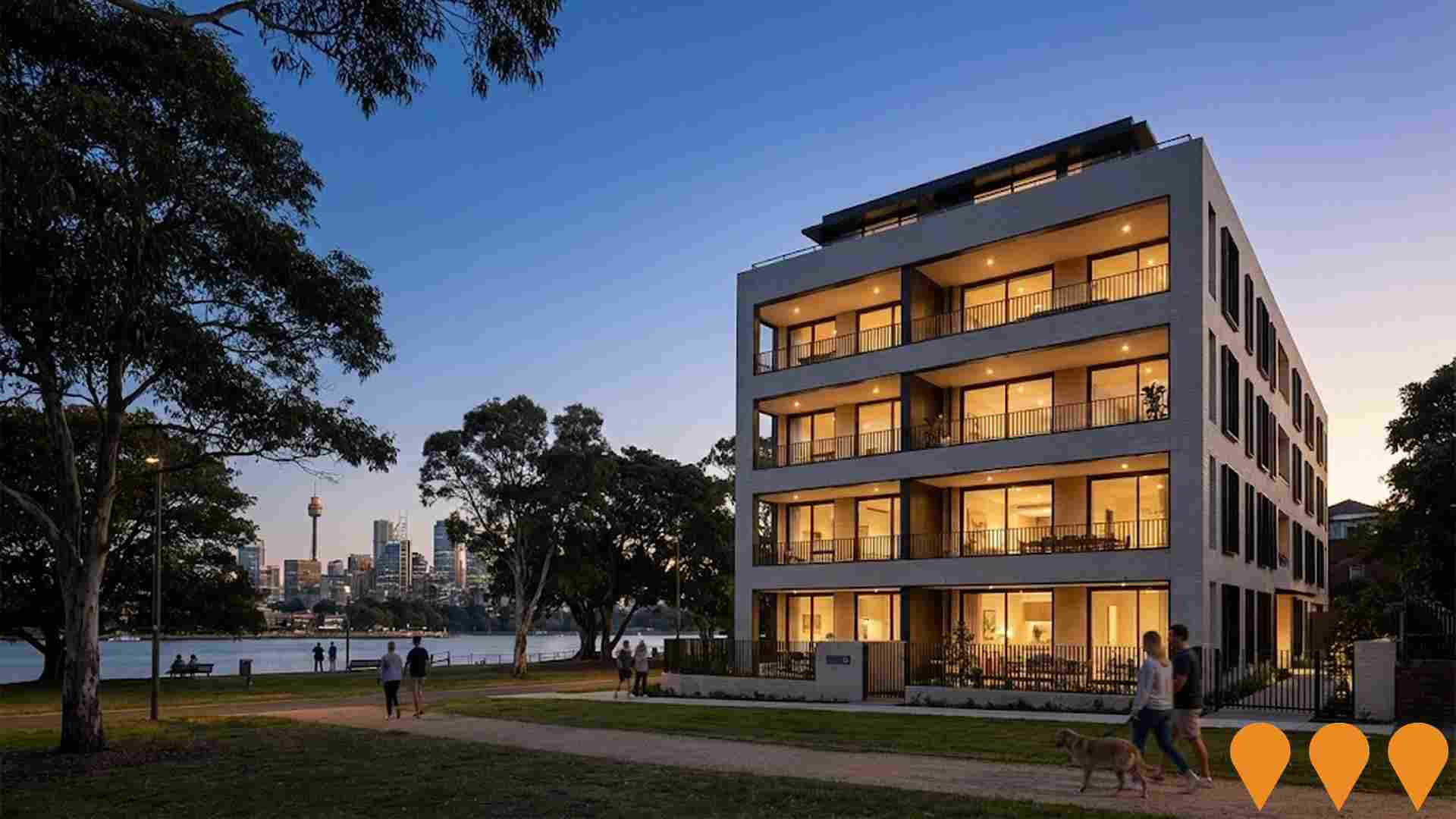Chart Color Schemes
est. as @ -- *
ABS ERP | -- people | --
2021 Census | -- people
Sales Activity
Curious about local property values? Filter the chart to assess the volume and appreciation (including resales) trends and regional comparisons, or scroll to the map below view this information at an individual property level.
Find a Recent Sale
Sales Detail
Population
An assessment of population growth drivers in Croydon reveals an overall ranking slightly below national averages considering recent, and medium term trends
Croydon's population, as of November 2025, is approximately 11,300. This figure represents an increase of 307 people since the 2021 Census, which reported a population of 10,993. The change is inferred from the estimated resident population of 11,314 in June 2024 and three additional validated new addresses since the Census date. This results in a population density ratio of 4,362 persons per square kilometer, placing Croydon in the top 10% of locations assessed by AreaSearch, indicating high demand for land in the area. Overseas migration contributed approximately 99.0% of overall population gains during recent periods.
AreaSearch uses ABS/Geoscience Australia projections for each SA2 area, released in 2024 with a base year of 2022. For areas not covered by this data, AreaSearch employs NSW State Government's SA2 level projections, released in 2022 with a base year of 2021. Growth rates by age group from these aggregations are applied to all areas for the years 2032 to 2041. According to population projections, Croydon is expected to experience above median growth, increasing by 1,754 persons to reach a total of 13,054 by 2041, reflecting a 15.7% increase over the 17-year period.
Frequently Asked Questions - Population
Development
AreaSearch assessment of residential development drivers sees a low level of activity in Croydon, placing the area among the bottom 25% of areas assessed nationally
Croydon averaged approximately 19 new dwelling approvals annually. Between FY21 and FY25, 99 homes were approved, with an additional 5 approved in FY26 to date. Despite a falling population during this period, housing supply has remained adequate relative to demand, resulting in a balanced market with good buyer choice.
The average expected construction cost of new dwellings is $497,000, indicating that developers are targeting the premium market segment with higher-end properties. In FY26, $70,000 in commercial development approvals have been recorded, suggesting a predominantly residential focus. When compared to Greater Sydney, Croydon shows significantly reduced construction activity, at 65.0% below the regional average per person. This constrained new construction typically reinforces demand and pricing for existing homes. However, recent periods have seen an increase in development activity, which remains below the national average.
This suggests that the area is well-established with potential planning limitations. New development in Croydon consists of 61.0% standalone homes and 39.0% townhouses or apartments, offering a range of housing types across different price ranges. The population density per approval is around 474 people, indicating a mature market. Population forecasts project an increase of 1,768 residents by 2041. If current development rates continue, housing supply may not keep pace with population growth, potentially increasing buyer competition and supporting stronger price growth.
Frequently Asked Questions - Development
Infrastructure
Croydon has very high levels of nearby infrastructure activity, ranking in the top 20% nationally
Area infrastructure significantly impacts local performance. AreaSearch identified 35 potential impact projects. Key initiatives include Croydon Transport Oriented Development Precinct, NSW Health Infrastructure Program - Inner West (2017-2026), NSW School Infrastructure Program - Inner West (2018-present), and Burwood Culture House (commencing 2022).
Professional plan users can use the search below to filter and access additional projects.
INFRASTRUCTURE SEARCH
 Denotes AI-based impression for illustrative purposes only, not to be taken as definitive under any circumstances. Please follow links and conduct other investigations from the project's source for actual imagery. Developers and project owners wishing us to use original imagery please Contact Us and we will do so.
Denotes AI-based impression for illustrative purposes only, not to be taken as definitive under any circumstances. Please follow links and conduct other investigations from the project's source for actual imagery. Developers and project owners wishing us to use original imagery please Contact Us and we will do so.
Frequently Asked Questions - Infrastructure
NSW Health Infrastructure Program - Inner West
Part of a $3.4 billion NSW health infrastructure investment, this program includes ongoing hospital upgrades, health facility improvements, and critical maintenance across the Inner West communities. The program is delivered by Health Infrastructure, which manages major health capital projects over $10 million in NSW.
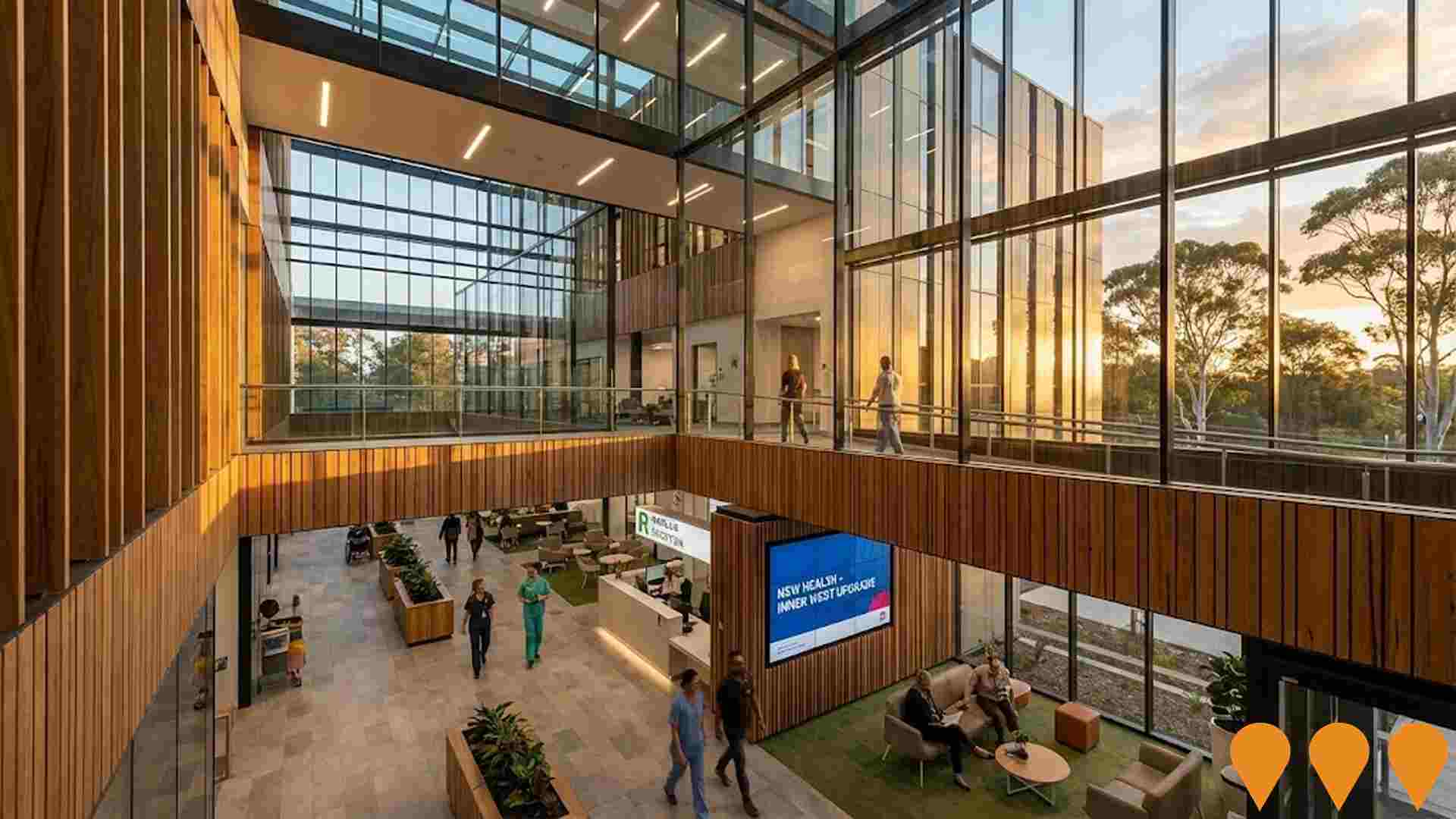
Sydney Metro West - Burwood North Station
Underground metro station forming part of the 24 km Sydney Metro West line between Greater Parramatta and the Sydney CBD. Located at the corner of Burwood Road and Parramatta Road, the station will have two entrances (north and south of Parramatta Road). Station box excavation (29 m deep) was completed in March 2025. As of November 2025, tunnelling for the overall Sydney Metro West project is over 95% complete and station fit-out works are progressing at Burwood North. The station will feature fully accessible platforms, platform screen doors and air-conditioned trains operating every 4 minutes in peak. Opening scheduled for 2032.

Burwood Culture House
A new cultural hub transforming the former car park in front of Burwood Library into a vibrant community facility featuring a 250-seat theatre, multipurpose studios and halls, community lounge, public plaza with water play, lawn area, garden terrace, cafe, public art, landscaping and improved public open space.
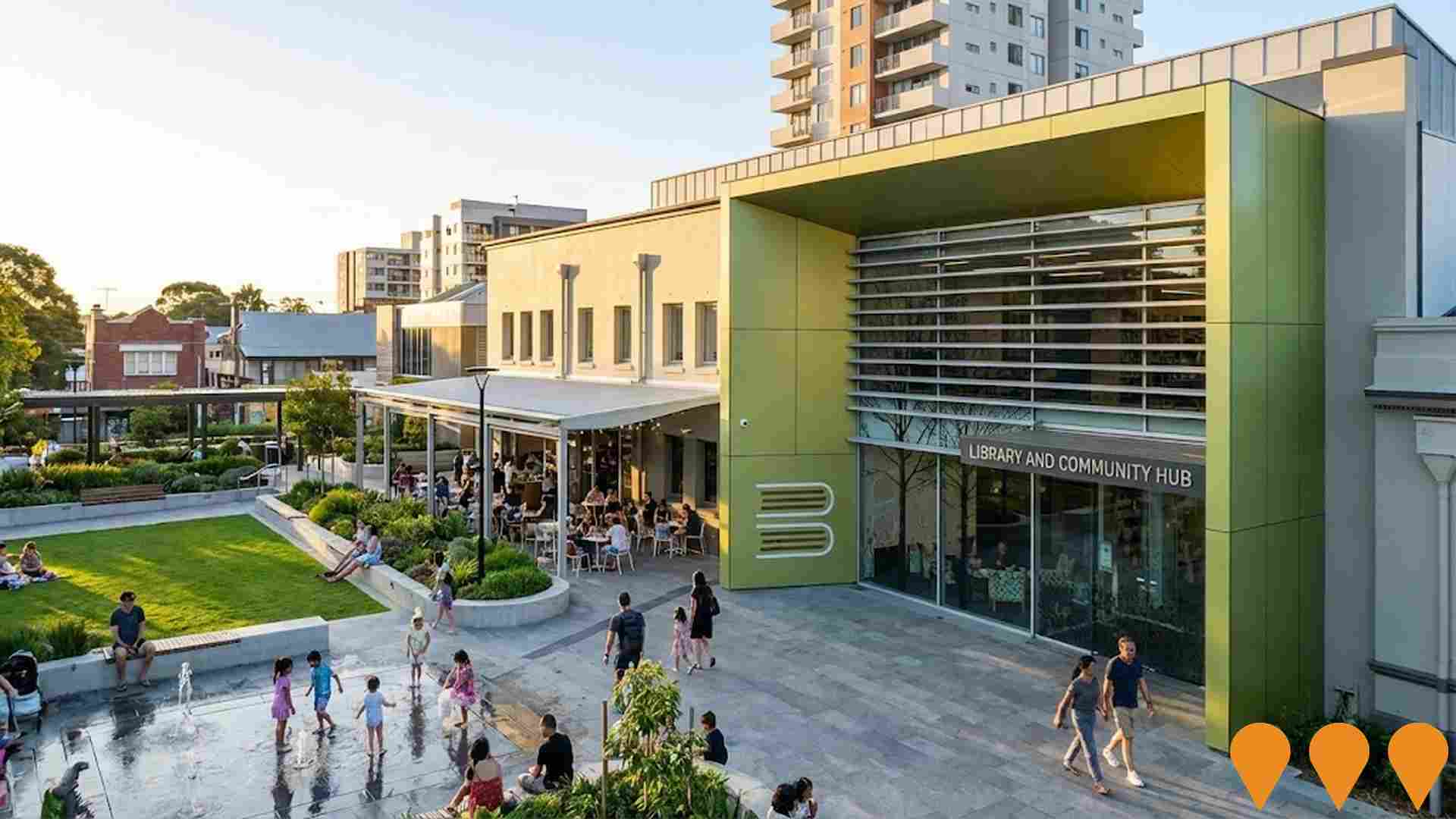
Inner West Housing Investigation Areas
Council-led comprehensive housing strategy (Our Fairer Future Plan) focusing on Housing Investigation Areas around transport nodes including Ashfield, Croydon, Dulwich Hill, Lewisham, Marrickville and others. Includes masterplans for increased density, new parks, plazas, multi-purpose libraries, walking/cycling paths, improved public domain and transport connections. Part of Inner West Council's alternative to NSW Government TOD reforms.

Croydon Transport Oriented Development Precinct
State-led and council-led planning for higher-density, mixed-use housing around Croydon Station across Inner West and Burwood LGAs. NSW Government TOD SEPP provisions were triggered for the Inner West side from 31 January 2025, while Burwood Council adopted an alternative lower-density Option 4 masterplan for its side on 29 January 2025 and submitted it to DPHI. The program concentrates mid to high-rise housing to the north of the rail corridor, with heritage protections for areas such as The Strand, Malvern Hill and Cintra Estate. NSW indicates capacity for over 2,700 new homes in the Inner West LGA over 15 years. Features enhanced public domain, expanded open spaces, improved active transport connections, and affordable housing requirements.
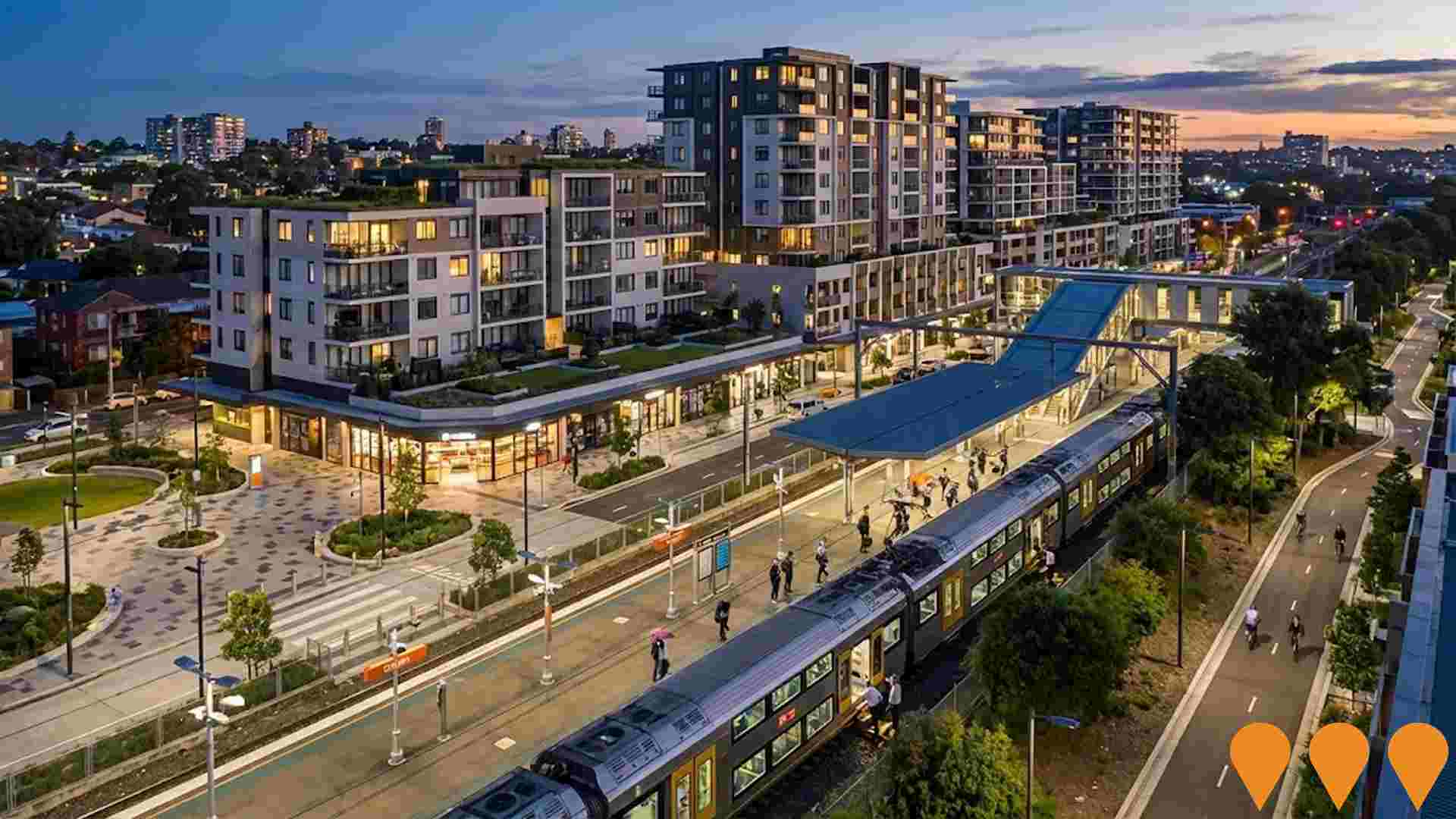
WestConnex M4 East
5.5km twin three-lane motorway tunnels connecting the M4 at Homebush to Haberfield via Concord, part of the 33km WestConnex network. Known as Stage 1B of WestConnex, this was Australia's longest urban road tunnel at the time of completion. Features advanced safety systems and removes thousands of vehicles from surface roads, providing traffic-light free motorway connection. Opened July 13, 2019. Delivered by Leighton Contractors, Samsung and John Holland joint venture.
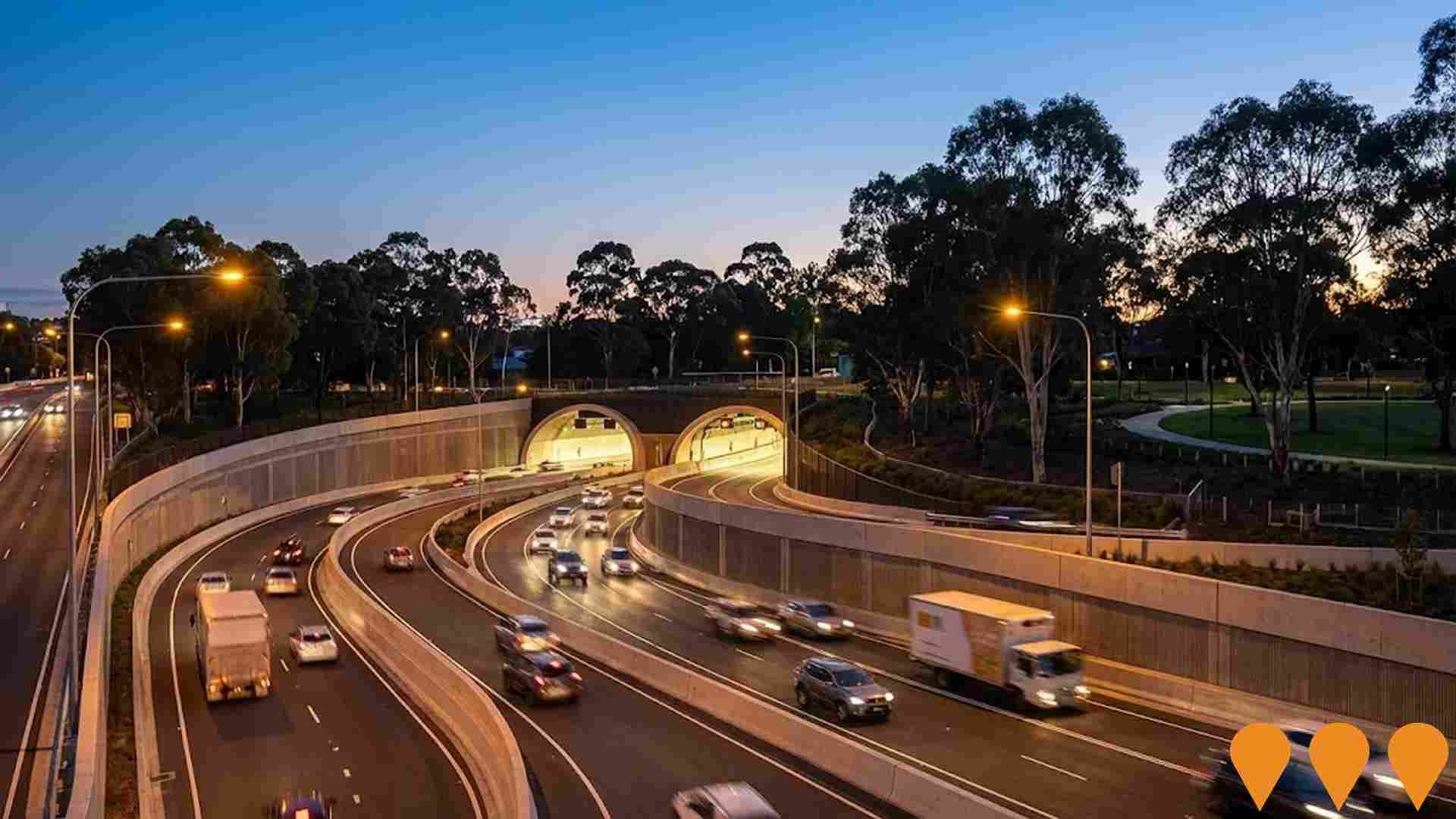
Cardinal Freeman Final Release Development - Wattle Building
The final stage of development at Cardinal Freeman retirement village, featuring the new Wattle building with 41 contemporary independent living apartments. This represents the last opportunity to secure brand-new apartments in this highly sought-after Inner West retirement community. Construction began April 2025 following demolition of the original Building One, with sales launching November 2025 and move-in Spring 2026.

NSW School Infrastructure Program - Inner West
Part of broader NSW school infrastructure program delivering new and upgraded schools across NSW. Includes funding for public school infrastructure improvements in Inner West region serving Croydon Park area students.
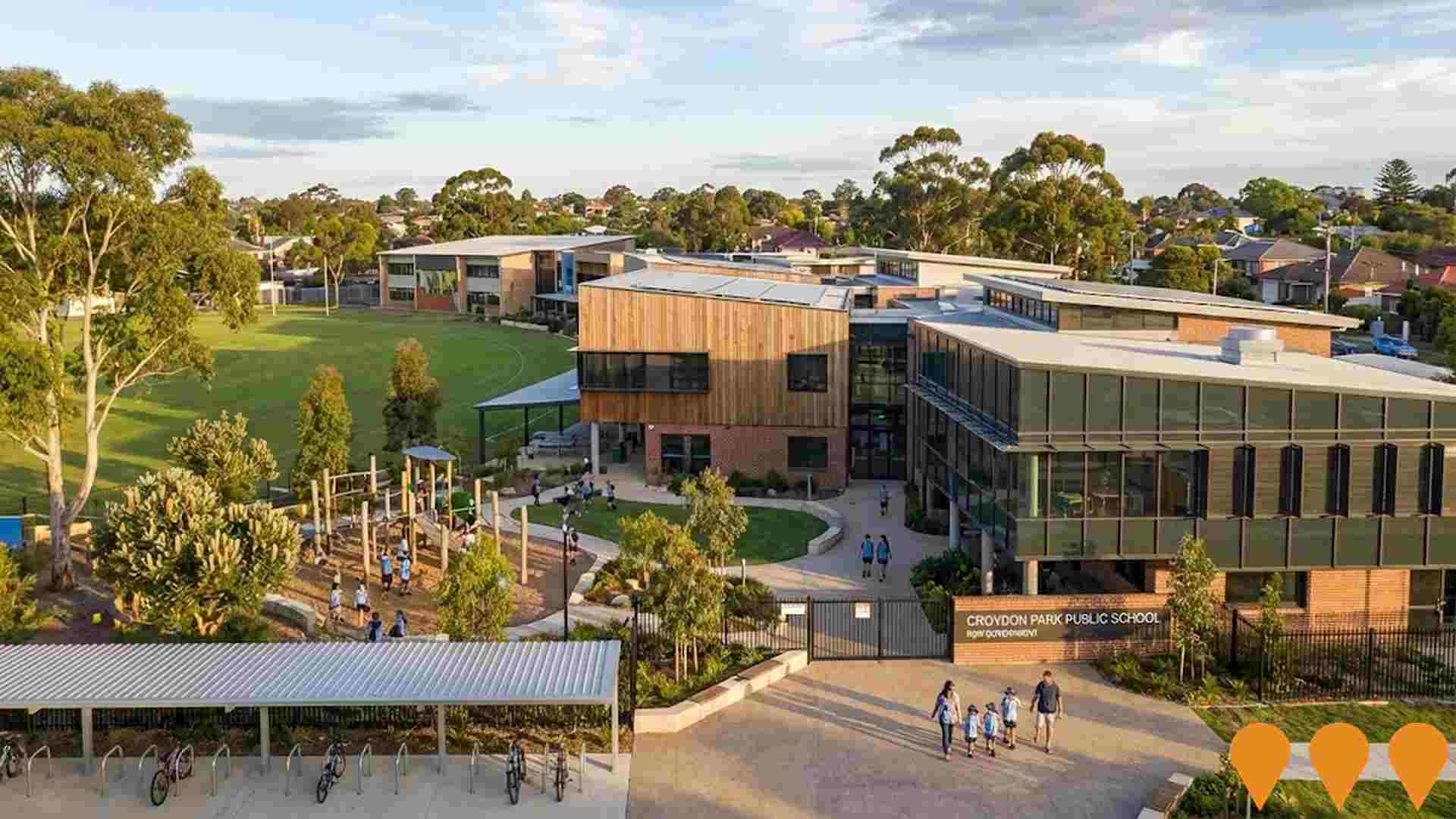
Employment
The employment landscape in Croydon shows performance that lags behind national averages across key labour market indicators
Croydon has a highly educated workforce with significant representation in professional services. Its unemployment rate was 4.5% as of June 2025, 0.3% higher than Greater Sydney's rate of 4.2%.
Employment growth over the past year was estimated at 4.1%. As of June 2025, 6,120 residents were employed while workforce participation stood at 57.6%, below Greater Sydney's 60.0%. Key industries for employment among residents are health care & social assistance, professional & technical services, and education & training. Croydon has a strong specialization in education & training with an employment share of 1.3 times the regional level.
Conversely, construction shows lower representation at 6.3% compared to the regional average of 8.6%. Employment opportunities locally may be limited as indicated by the count of Census working population versus resident population. Between June 2024 and June 2025, employment levels increased by 4.1% while labour force grew by 4.3%, causing unemployment to rise by 0.2 percentage points. In comparison, Greater Sydney recorded employment growth of 2.6%, labour force growth of 2.9%, with unemployment rising 0.3 percentage points. Jobs and Skills Australia's national employment forecasts from May 2025 suggest potential future demand within Croydon. These projections estimate national employment growth at 6.6% over five years and 13.7% over ten years, with varying rates across industry sectors. Applying these projections to Croydon's employment mix suggests local growth of approximately 7.0% over five years and 14.2% over ten years, though these are simple weighted extrapolations for illustrative purposes only and do not account for localized population projections.
Frequently Asked Questions - Employment
Income
Income analysis reveals strong economic positioning, with the area outperforming 60% of locations assessed nationally by AreaSearch
AreaSearch's latest postcode level ATO data for financial year ending June 2022 indicates that Croydon has high incomes nationally. The median assessed income is $53,208 and the average income stands at $74,359. In comparison, Greater Sydney's median income is $56,994 with an average of $80,856. Based on a 12.61% growth in Wage Price Index since financial year ending June 2022, estimated incomes as of September 2025 would be approximately $59,918 (median) and $83,736 (average). Census data shows household income ranks at the 74th percentile ($2,121 weekly), while personal income is at the 46th percentile. Income analysis reveals that 28.8% of locals (3,254 people) fall into the $1,500 - 2,999 weekly income category. A significant 34.6% earn above $3,000 weekly. High housing costs consume 15.7% of income, but strong earnings place disposable income at the 74th percentile. The area's SEIFA income ranking places it in the 8th decile.
Frequently Asked Questions - Income
Housing
Croydon displays a diverse mix of dwelling types, with above-average rates of outright home ownership
Croydon's dwelling structures, as per the latest Census, consisted of 57.2% houses and 42.8% other dwellings (semi-detached, apartments, 'other' dwellings), contrasting with Sydney metro's 33.5% houses and 66.5% other dwellings. Home ownership in Croydon stood at 37.1%, with mortgaged dwellings at 30.0% and rented ones at 32.9%. The median monthly mortgage repayment was $2,640, surpassing Sydney metro's average of $2,436. The median weekly rent in Croydon was $460, slightly higher than Sydney metro's $465. Nationally, Croydon's mortgage repayments were significantly higher at $2,640 compared to the Australian average of $1,863, and rents were substantially above the national figure of $375.
Frequently Asked Questions - Housing
Household Composition
Croydon features high concentrations of group households, with a higher-than-average median household size
Family households constitute 74.5% of all households, including 37.4% couples with children, 23.8% couples without children, and 11.7% single parent families. Non-family households account for the remaining 25.5%, with lone person households at 21.2% and group households comprising 4.4% of the total. The median household size is 2.8 people, which is larger than the Greater Sydney average of 2.5.
Frequently Asked Questions - Households
Local Schools & Education
Croydon shows strong educational performance, ranking in the upper quartile nationally when assessed across multiple qualification and achievement indicators
Croydon's residents aged 15+ have a higher educational attainment than broader benchmarks. Specifically, 43.3% hold university qualifications compared to Australia's 30.4% and NSW's 32.2%. Bachelor degrees are the most common at 28.1%, followed by postgraduate qualifications (12.7%) and graduate diplomas (2.5%). Vocational pathways account for 21.8% of qualifications, with advanced diplomas at 10.2% and certificates at 11.6%.
Educational participation is high, with 30.1% currently enrolled in formal education. This includes 8.3% in tertiary education, 7.7% in primary education, and 7.7% pursuing secondary education. Croydon's five schools have a combined enrollment of 3,345 students as of the latest data. The area has significant socio-educational advantages and academic achievement (ICSEA: 1119). The educational mix includes three primary schools, one secondary school, and one K-12 school. Croydon functions as an education hub with 29.6 school places per 100 residents, significantly above the regional average of 15.9. This attracts students from surrounding communities.
Frequently Asked Questions - Education
Schools Detail
Nearby Services & Amenities
Transport
Transport servicing is high compared to other areas nationally based on assessment of service frequency, route connectivity and accessibility
Transport analysis indicates 56 active transport stops operating within Croydon. These include a mix of train and bus services. A total of 42 individual routes service these stops, collectively facilitating 5,300 weekly passenger trips.
Transport accessibility is rated excellent, with residents typically situated 147 meters from the nearest stop. Service frequency averages 757 trips per day across all routes, equating to approximately 94 weekly trips per individual stop.
Frequently Asked Questions - Transport
Transport Stops Detail
Health
Croydon's residents are extremely healthy with both young and old age cohorts seeing low prevalence of common health conditions
Analysis of health metrics shows strong performance throughout Croydon.
Both young and old age cohorts have a low prevalence of common health conditions. The rate of private health cover is very high at approximately 56% of the total population, which amounts to around 6,384 people. The most common medical conditions in the area are arthritis and mental health issues, affecting 6.1% and 6.1% of residents respectively. A total of 74.0% of residents declare themselves completely clear of medical ailments, compared to 77.0% across Greater Sydney. The area has 19.8% of residents aged 65 and over, which totals 2,236 people. This figure is higher than the 14.5% in Greater Sydney. Health outcomes among seniors are particularly strong, broadly in line with the general population's health profile.
Frequently Asked Questions - Health
Cultural Diversity
Croydon is among the most culturally diverse areas in the country based on AreaSearch assessment of a range of language and cultural background related metrics
Croydon has a high level of cultural diversity, with 47.7% of its population born overseas and 53.2% speaking a language other than English at home. Christianity is the main religion in Croydon, making up 47.3% of people. However, Buddhism is overrepresented compared to Greater Sydney, comprising 6.9% of Croydon's population.
The top three ancestry groups are Chinese (23.2%), Australian (12.6%), and English (12.4%). Notably, Croatian (1.6%) and Lebanese (4.3%) are overrepresented in Croydon compared to regional averages.
Frequently Asked Questions - Diversity
Age
Croydon's median age exceeds the national pattern
Croydon's median age is 41 years, which is higher than Greater Sydney's average of 37 years and Australia's median of 38 years. Compared to Greater Sydney, Croydon has a notably higher proportion of individuals aged 15-24 (15.2%) and a lower proportion of those aged 35-44 (11.8%). According to the 2021 Census, the age group 15-24 grew from 12.7% to 15.2%, while the 25-34 cohort increased from 14.1% to 15.2%. Conversely, the 5-14 cohort declined from 10.5% to 8.9%, and the 55-64 group decreased from 13.5% to 12.4%. Demographic modeling indicates significant changes in Croydon's age profile by 2041. The 35-44 cohort is projected to grow by 81%, adding 1,083 residents to reach 2,415. Residents aged 65 and older will represent 56% of the anticipated population growth. However, population declines are projected for the 0-4 and 5-14 cohorts.
